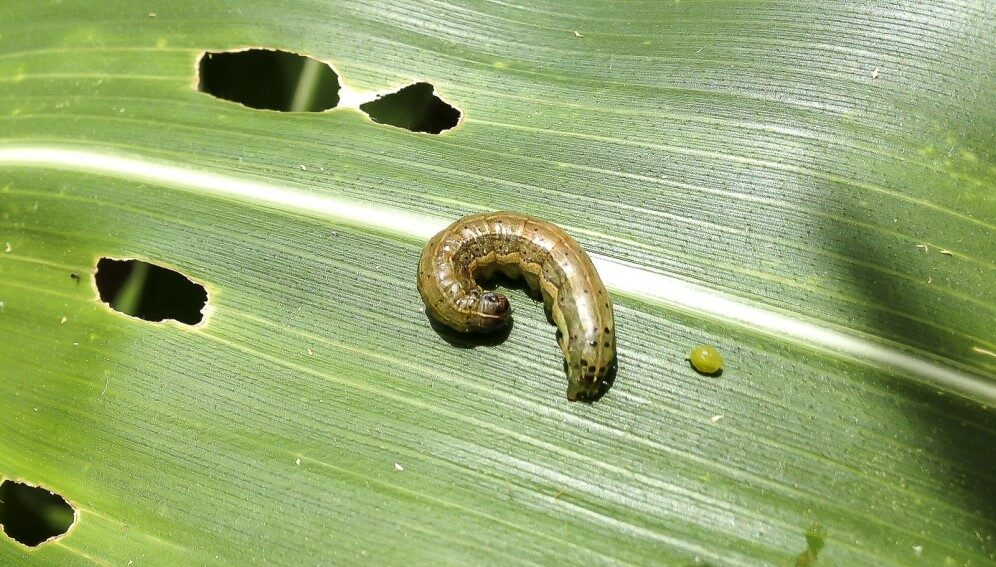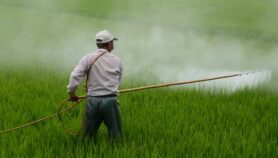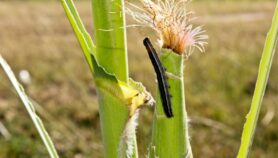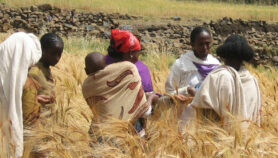12/09/22
Fall armyworm campaign boosts maize yield by a third

By: Ochieng’ Ogodo
Send to a friend
The details you provide on this page will not be used to send unsolicited email, and will not be sold to a 3rd party. See privacy policy.
[NAIROBI] Educating farmers about the destructive pest fall armyworm using a combination of digital media and face-to-face events can significantly boost maize yields, a study has found.
Fall armyworm (Spodoptera frugiperda) is one of the most damaging invasive species to have emerged in Africa in recent years, resulting in production losses and disease control costs of about US$65.6 billion a year, according to the study conducted in Rwanda.
The analysis, published last month in Food and Energy Security, shows that exposure to a combined communication campaign consisting of plant health rallies, radio drama and mobile messaging is an effective way to increase knowledge about fall armyworm (FAW) management and improve yields.
“We found that the information campaign was positively associated with maize yield increases ranging from ten per cent to 34 per cent, depending on the channel [used],” says
“We found that the information campaign was positively associated with maize yield increases ranging from ten per cent to 34 per cent.”
Justice Tambo, CABI
Justice Tambo, a co-author and socio-economist with the Centre for Agriculture and Bioscience International (CABI), the parent organisation of SciDev.Net.
Researchers found that the campaign was more successful among larger households exposed to multiple modes of information, suggesting that field-based and digital approaches complemented each other.
Only exposure to all three information channels had a significant effect – of 25 percentage points or more – on farmers’ understanding of when to plant maize to help prevent or reduce an infestation, the CABI-led study found.
“Our findings also suggest that while there is a growing popularity in the use of digital extension [support] approaches to deliver timely information to farmers in a cost-effective manner, much greater gains can be achieved if they are combined with other low-cost face-to-face extension methods, such as plant health rallies,” the study adds.
Tambo tells SciDev.Net that the information campaign contributed significantly to an increase in farmers’ knowledge about the pest, including how to correctly identify the pest and the use of traditional, nature-based methods ─ rather than pesticides ─ as the first step in pest management.
Tambo says that fall armyworm has emerged as one of the most serious crop pests in many African countries, including Rwanda, where the pest was first reported in February 2017 and spread throughout the country within two months.

“The FAW outbreak in Rwanda has led to extensive spraying of pesticides, including the use of prohibited and wrong types of pesticides,” says Tambo. “With limited knowledge and desperate attempts to fight the pest, many farmers also experimented with indigenous pest control practices, such as the use of cattle urine, and mixtures of ash and hot pepper.”
“The outbreak of a new serious pest such as FAW tends to attract inaccurate, sensationalised or inconsistent information from various sources, but farmers and decision-makers need reliable and timely information to adequately respond to the pest,” Tambo explains.
The multi-pronged campaign in Rwanda included regular monitoring of maize fields for early detection of the pest, intercropping maize with other crops which are not attacked by the pest, and regular weeding of the field to remove alternative host plants of the pest, Tambo adds.
Farmers also received information aimed at improving soil fertility to promote healthy plant growth so that crops could withstand the devastating pest.
The campaign was implemented between September 2019 and December 2020 in Bugesera and Rwamagana, major maize-growing districts of Rwanda. Researchers surveyed 720 smallholder maize farmers across the two districts.



Bruce Anani, a maize entomologist at the International Maize and Wheat Improvement Center in Kenya, says: “[The study] will help farmers to identify the pest and to know when to use the control measures and … policymakers to pave the way to make farmers get the right inputs, right information and to assist the farmers technically and financially to get rid of this pest.”
“Using an environmentally friendly method such as cultural control and coupling with other methods like host plant resistance, biological control including biopesticide and botanical control, will be the most sustainable way to control this new pest in Africa continent,” he tells SciDev.Net.
This piece was produced by SciDev.Net’s Sub-Saharan Africa English desk.













